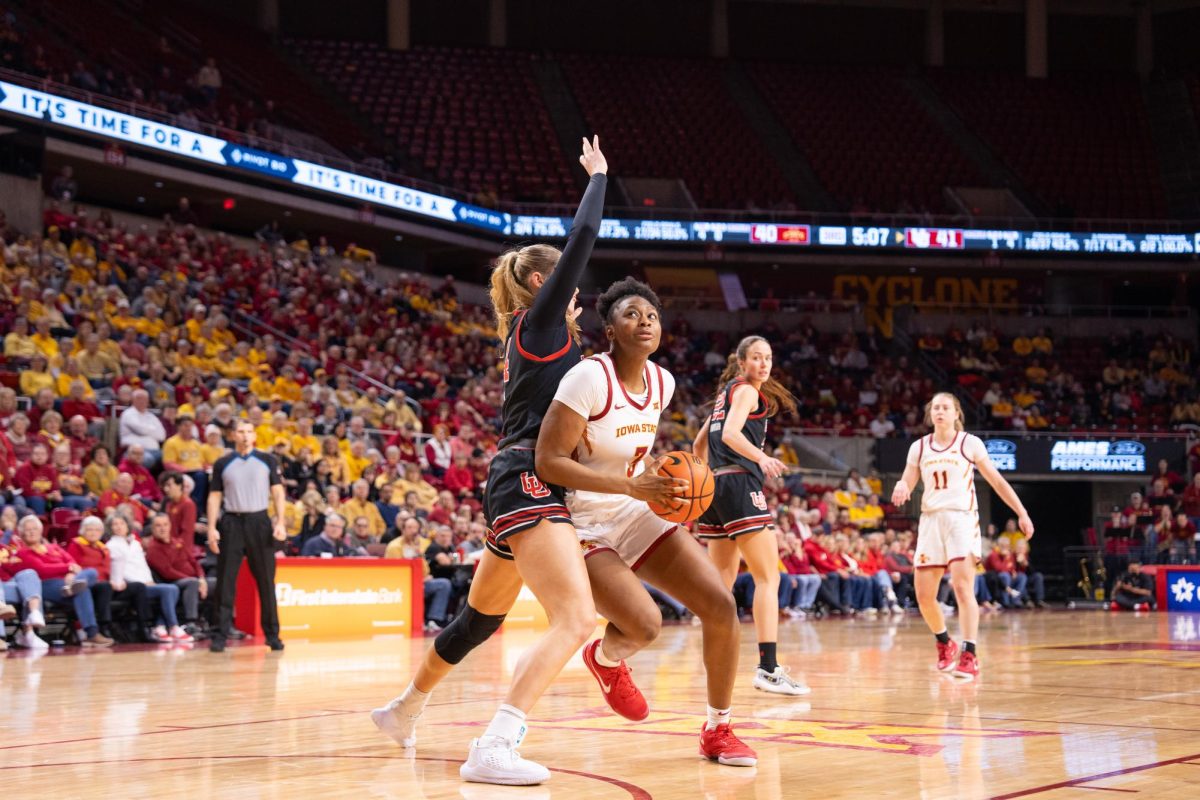En Garde
October 23, 2002
If the average ISU student earned a ‘D,’ he or she would have some explaining to do. But for most members of the ISU fencing club, a ‘D’ would be a cause for celebration.
Not a ‘D’ in classwork, but in their United States Fencing Association rating.
“I would like to pick up a rating in ‚p‚e and increase another rating in foil,” third-year fencer Ryan Peterson said.
Peterson, a senior in electrical engineering, currently holds a ranking of ‘E’ in foil, and is unrated in ‚p‚e. Under USFA ratings, ‘E’ is the lowest rating, while ‘A’ is the highest.
Graduate student Jessica Walter is just looking to pick up a rating in either foil or ‚p‚e.
Walter, who did her undergraduate work at Beloit College, says she would like to win an elimination bout sometime.
“I never do [very] well in the pools, so I’m seeded very high in the elimination bout,” Walter said. “I’m always fencing someone who is a No. 8 in the tournament or something like that.”
Club president Tina Greenfield is ranked an ‘E’ in foil, but unrated in ‚p‚e, in which she only competes in lesser tournaments.
Gaining a rating is easier said that done. Peterson said if a tournament is made up mostly of ‘D’ and ‘E’ fencers, the top finishers will only receive a rating of ‘D’.
“If you’re in an area like the Midwest, it’s very difficult to get an ‘A,’ because there’s not enough ‘A’s around to fence for you to officially get it yourself,” Peterson said.
“The Midwest is not known for high-name fencing. You’ve got to be coastal for national competitors.”
Peterson said interest in fencing is low in the Midwest compared to New York or California, where big-name fencing studios can afford to hire better European coaches.
“Pretty much every European country claims to have invented its own form of fencing, if not fencing itself,” he said.
Top U.S. foilist Justin Tausig competes in tournaments in places like Tunisia, Puerto Rico, France and Australia.
“To go up very high you have to travel,” Peterson said.
Because the typical ISU fencing club member can’t make the flight to Tunisia because of expense, there are other benefits that the fencers garner from club membership.
“Like any athletic activity, working out is a stress relieving kind of thing,” Walter said.
“It’s an aerobic activity that you can keep up even when you get older and you move, have kids, get a job, grow old and stuff like that,” Greenfield said.
Peterson said one misconception about fencing is that it is a speed sport.
“Speed is not a bad thing,” Peterson said. But fencing can also favor the older, more-experienced fencer.
“It’s not all how fast you are and how much endurance you have,” Greenfield said.
“If you know what you’re doing, as you get old, you can compensate for your losses by being a bit smarter at what you’re doing.”
Because of the cerebral nature of fencing and its members, the club has a reputation of being a little book-smart.
“We’re the nerds of the sporting world,” Peterson said.
Nerds who can win medals at the Summer Olympics.
Another undoubtable fact is that the cost of fencing with the ISU fencing club isn’t exorbitant.
“The dues are $15 a semester, and that covers everything,” Peterson said. “We can provide all the gear you need to fence.”
ISU fencing club members must also pay $30 USFA membership fees for insurance reasons, Peterson added.
The costs can rise, though.
“Most of the time fencers prefer to get some of their own gear just for sizing,” Peterson said. “We can’t guarantee that we have a perfect fit for everyone.”
So how much does a fencing set, including an electric weapon, jacket, mask, glove, lam‚ and body chords to hook up to the electric scoring system, cost?
“I’d say in the neighborhood of $200 to $300, full set,” he said.
Or you can follow the cost-free method Walter implements.
“Personally I haven’t actually invested any money in fencing,” Walter said. “I have asked for Christmas gifts.”
The ISU fencing club is not just limited to ISU students.
“In order to get GSB funding, we have to be able to accommodate everyone: Ames citizens, faculty, staff, everyone.”






